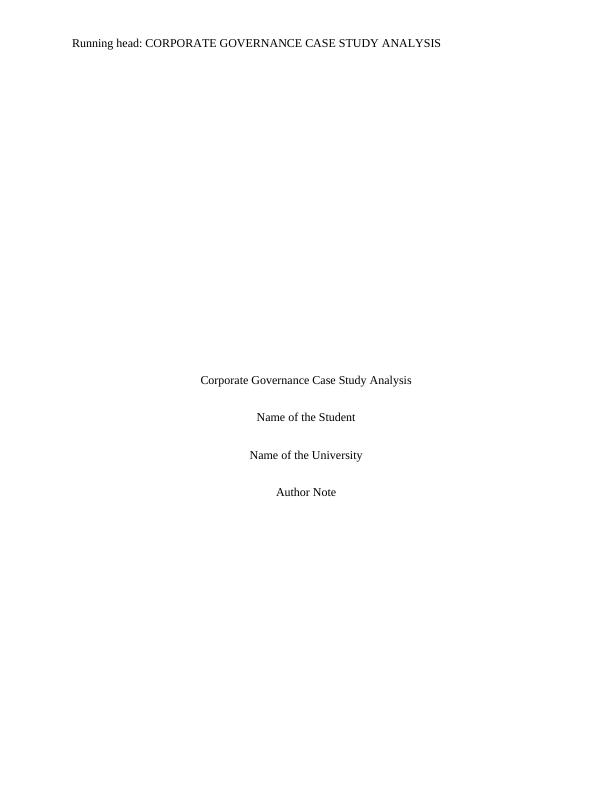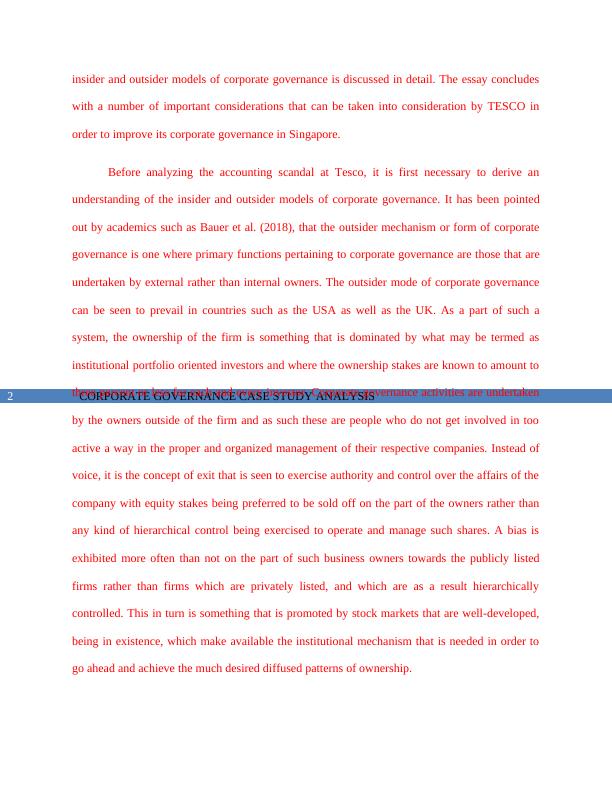Corporate Governance Case Study Analysis
The assignment is about corporate scandals and fraud, focusing on high-profile cases such as Lehman Brothers and Carillion. It discusses the impacts of these scandals on stakeholders and highlights the lack of effective controls and monitoring within organizations.
14 Pages3999 Words258 Views
Added on 2022-11-04
About This Document
This essay engages in an in-depth case study analysis of the corporate governance of TESCO by referring to the accounting scandal that tore the company apart and made the restructuring of its board of directors an imminent affair. Prior to the case study analysis, a literature review is undertaken, as a part of which existing research on the insider and outsider models of corporate governance is discussed in detail.
Corporate Governance Case Study Analysis
The assignment is about corporate scandals and fraud, focusing on high-profile cases such as Lehman Brothers and Carillion. It discusses the impacts of these scandals on stakeholders and highlights the lack of effective controls and monitoring within organizations.
Added on 2022-11-04
ShareRelated Documents
End of preview
Want to access all the pages? Upload your documents or become a member.
Failure of Corporate Governance in Tesco PLC
|13
|4675
|65
(7029EFA) - Governance Accountability & Ethics
|28
|5075
|355
Volkswagen Scandal
|15
|3975
|23
Ethics and Governance: Governance in Globalised Environment
|8
|2651
|150
Corporate Governance and its Importance in Business
|13
|3676
|210
What Is Management? Definitions and Functions
|9
|2213
|12




